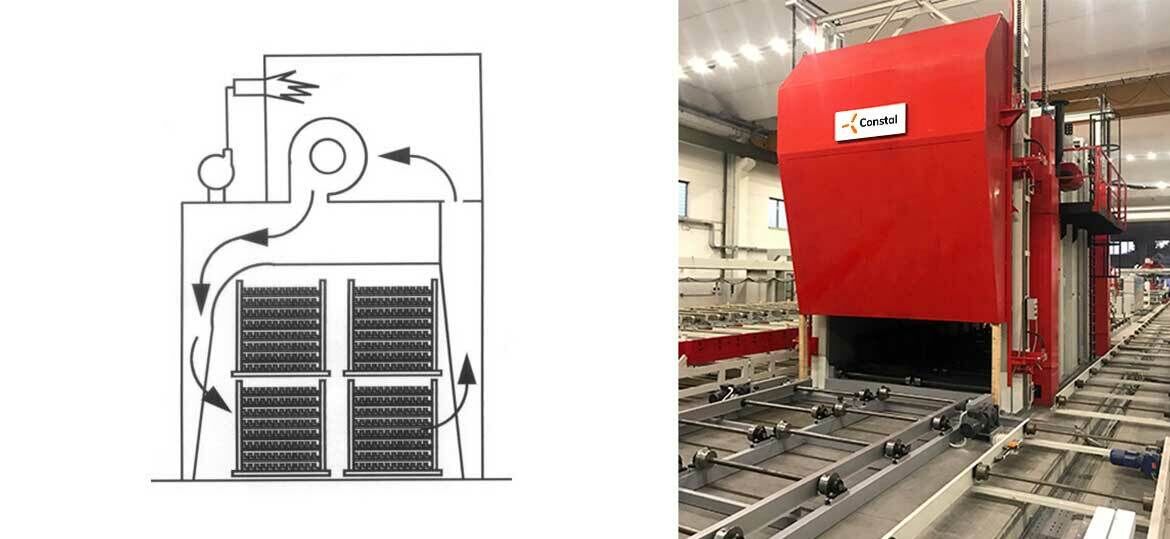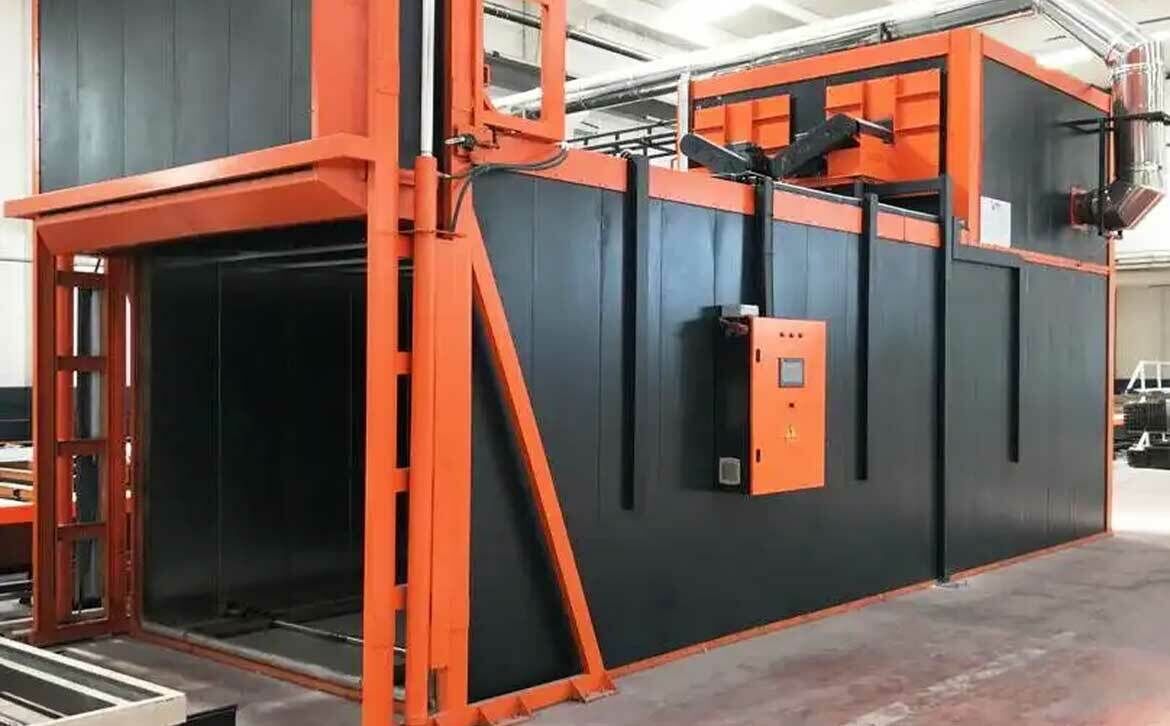
Aluminum profiles aging

Аluminum profile aging natural or artificial is the final heat treatment operation. Natural aging takes place on its own over a period of time, from a few weeks to a few months for various aluminum alloys. Artificial aging is carried out in special aging ovens in a few hours. Age strengthening depends on the nature of the strengthening phases: intermetallic compounds that are dissolved in aluminum during heating to hardening and released from the supersaturated solid solution during aging. Аluminum profile aging is carried out mainly by diffusion, therefore they depend on both temperature and time. In practice, aluminum profile shot blasting is also carried out, which is also an accepted and widespread advanced production technology.
Natural aging of aluminum profiles
After hardening of the aluminum alloy, aging follows, when the alloy is kept at room temperature for several days (natural aging). During aging, the supersaturated solid solution decomposes, which is accompanied by the hardening of the alloy. The decomposition of a supersaturated solid solution, in the lattice of which the copper atoms are arranged statistically uniformly, occurs in several stages, depending on the temperature and duration of aging. During the natural aging of aluminum profiles (at 20°C) or low-temperature artificial aging (below 100–150°C), there is no solid solution decomposition with the release of an excess phase.
Artificial aging of aluminum profiles
Heating hardened aluminum alloys to relatively low temperatures (usually in the range of 100-200 ° C) and holding at these temperatures (within a few tens of hours) is called artificial aging of aluminum profiles․
Thermal break process of aluminum profiles
Aluminum profiles are subject to various types of heat treatment. One of the most popular processing methods is aging - a process that improves the strength characteristics of the metal. Aging follows after quenching when the alloy is kept at room temperature for several days (natural aging) or for 10–24 hours at elevated temperature (artificial aging).
After hardening of the aluminum alloy, aging follows, when the alloy is kept at room temperature for several days (natural aging).
The products obtained from the thermal break process of aluminum profiles are suitable for glazing office buildings, and industrial premises, as well as balconies, loggias, and wide doors.
Aluminum, a strong and light metal, is excellent for making window profiles. These structures have almost unlimited possibilities - they glaze openings of any design, even the most complex. It “lives” for a long time, withstanding great temperature drops from -80 to + 100◦. In addition, aluminum structures are completely fireproof, they practically do not burn. A material prone to corrosion, the aluminum profile is subjected to another manufacturing process, аluminum profiles anodizing, to increase its resistance.
our Brochure


